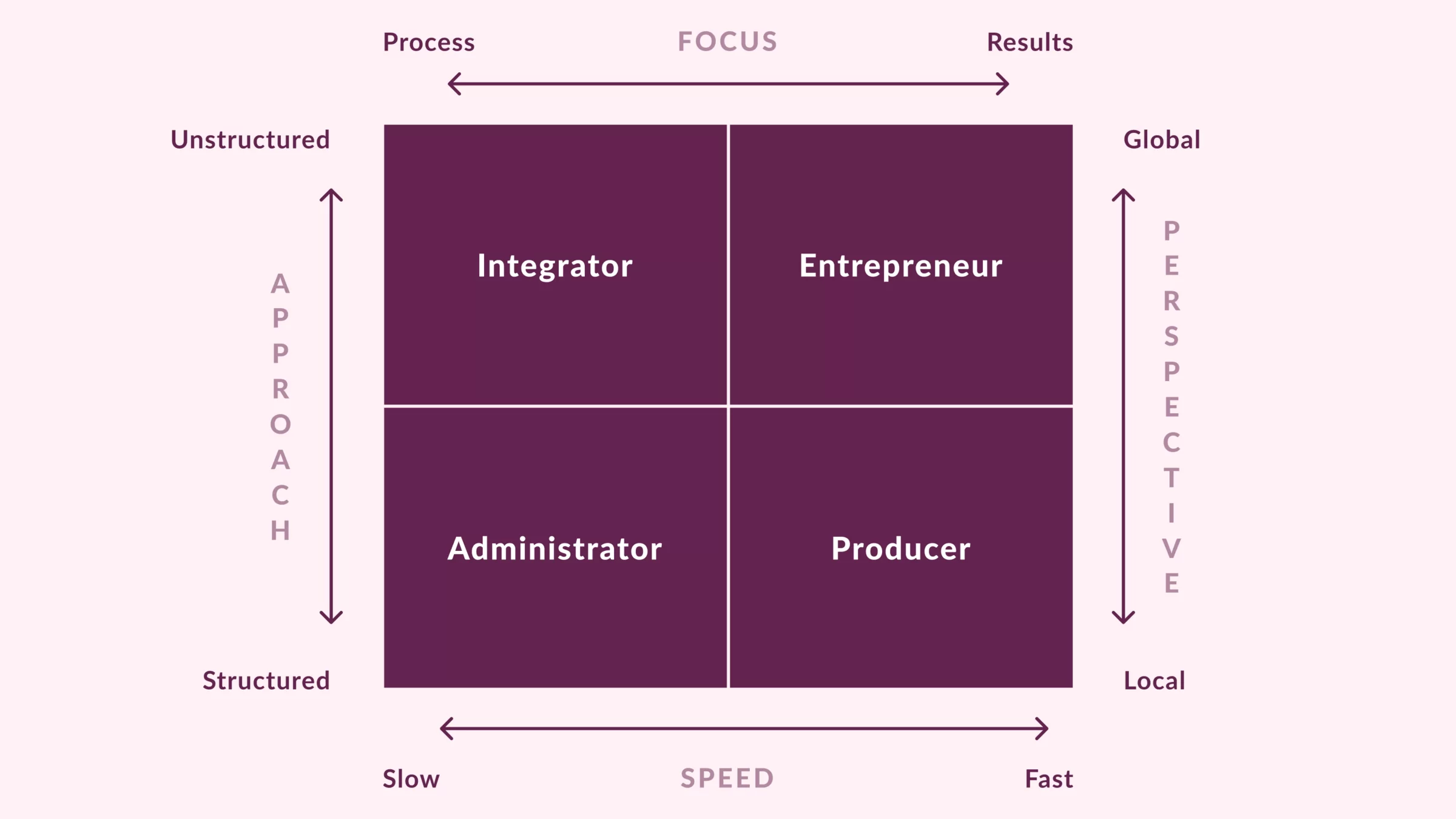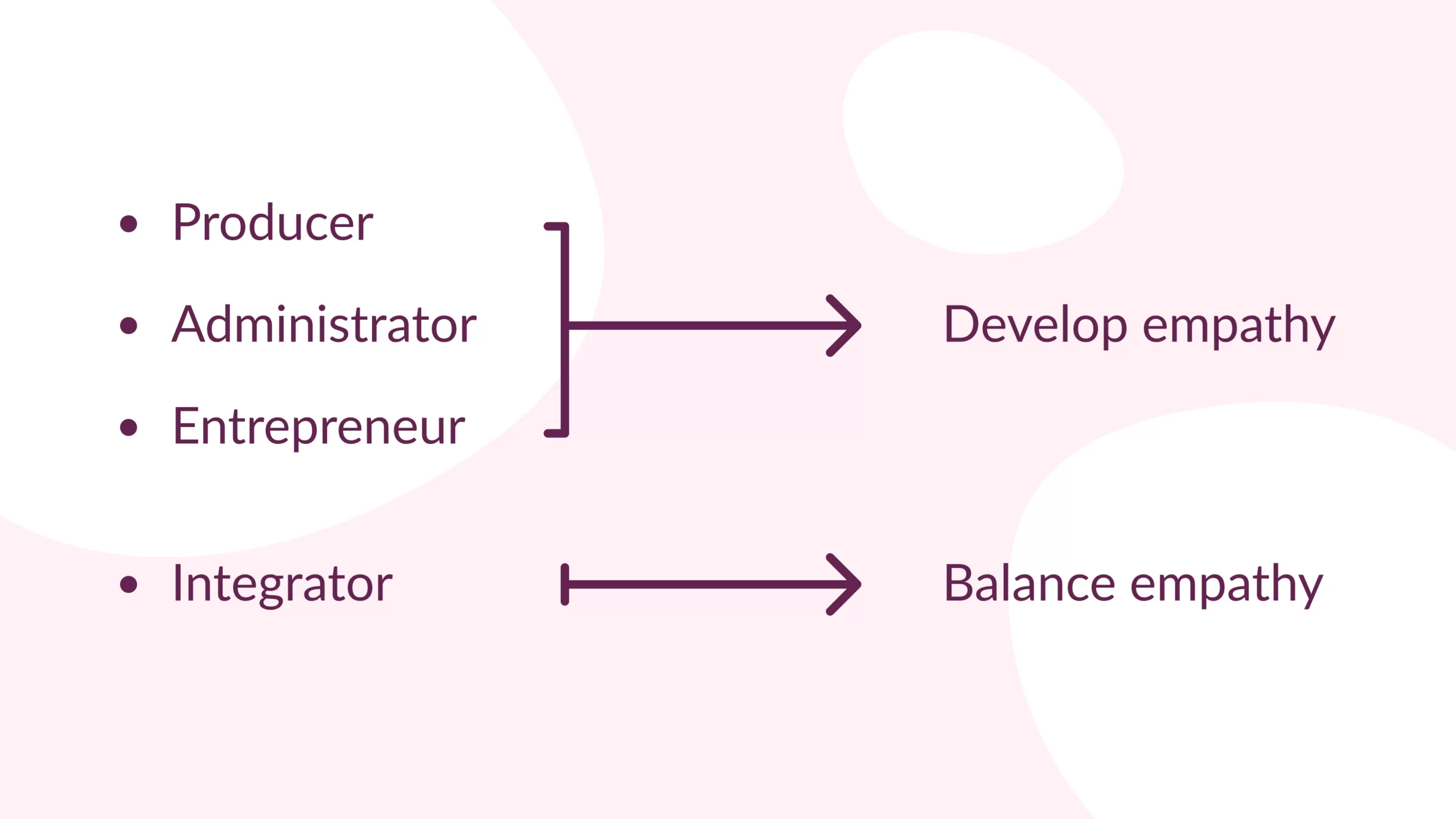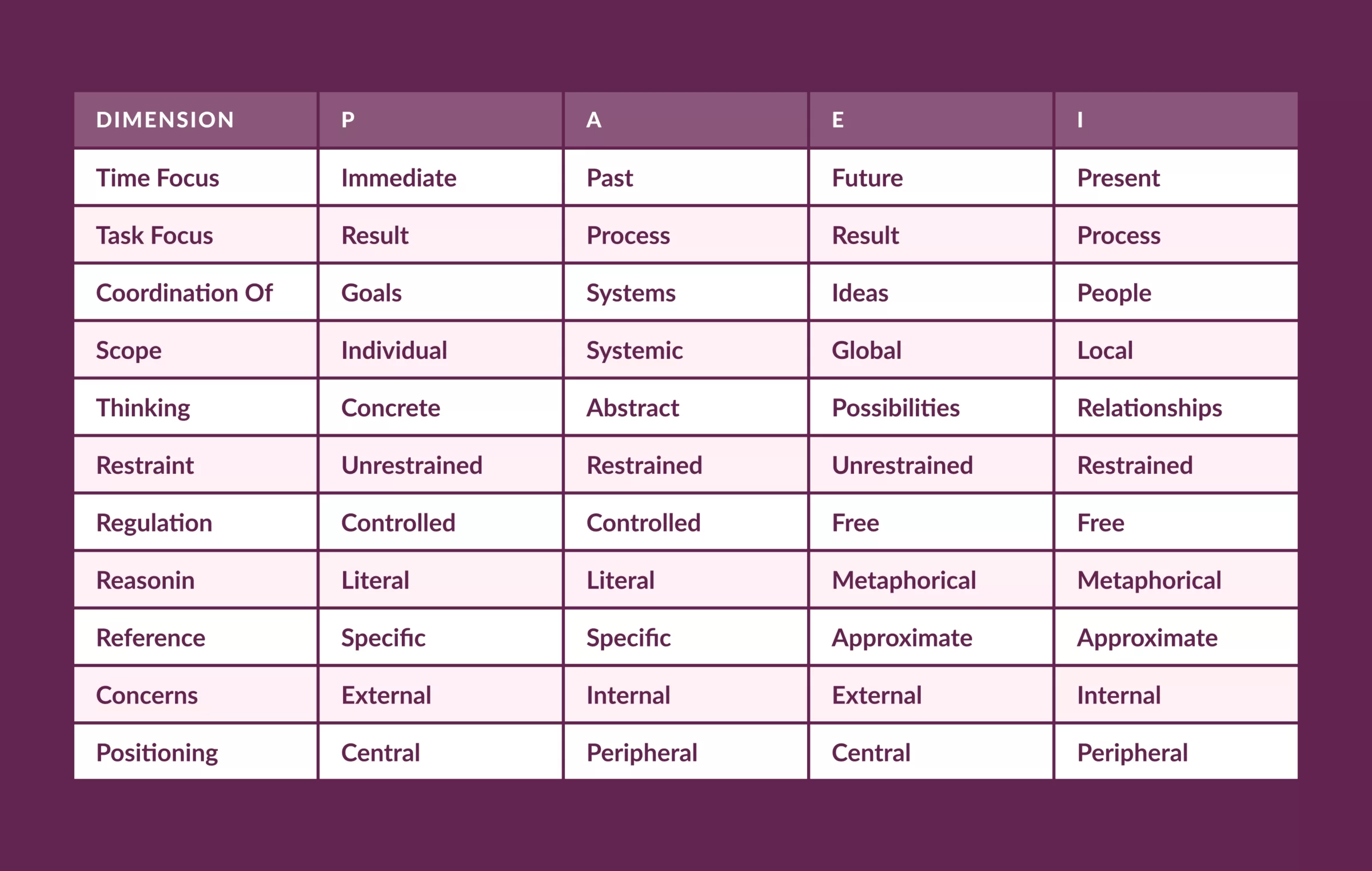Employees are not just human resources anymore, they are the teams of personalities and they need to be treated this way. Thus, to achieve a team’s success not a manager is needed, but a leader. The difference between the manager and the leader is that the manager tends to put project’s goals above personal goals of team members. On the other hand, the leader is the one who seeks to build a strong commitment based on an intersection of the project goals and the personal goals and values of their team members.
Leadership is not about titles, positions, or flow charts. It is about one life influencing another. — John C. Maxwell
Teams that truly believe in their goal demonstrate better results and see the big picture of how their today’s actions will affect themselves, their company, and the world in the future. Building this kind of attitude within a team takes strong leadership skills.
There are different leadership styles, and knowing yours will help you benefit from your natural strengths while working on areas of improvement. However, leadership itself is a complex term, and it should be examined from different perspectives in order to apply it to your life and become a true leader to your team.
In this article, we will look closely at the Dr. Ichak Adizes approach of the leadership styles categorization. It not only defines strengths and weaknesses of different styles but also explains how to develop yourself and efficiently communicate with representatives of other styles.
The PAEI leadership styles model
Management styles have been studied by many scientists for the last hundred years. Many modern models (as well as the Adizes’) are based on the pioneering work of Dr. Carl Jung and feature four basic management styles. But the PAEI model has some advantages:
1. It is understandable — it simple and clear, everyone in a company — from an intern to a CEO — can understand and apply it. If you were looking for a detailed sophisticated model, this is not it.
2. It is accurate — representatives of both SME and multinational corporations claim that this model contains a very accurate representation of how people really work.
3. It is versatile — it can be applied to assess not only a leader but all people in general, and even a company, a project, a product, or the whole managerial process.
What does PAEI stand for?

What is PAEI? Pineapples by pineapple
Further in the article, you’ll find the detailed descriptions of these leadership styles. But before approaching the descriptions is it very important to define leadership itself and the role a leader must play.
The role of a leader?
In order for a company to succeed, a complementary team is needed. And a leader who will bring them together and set all processes to work. Now I’d like to show you a short video where Ichak Adizes is speaking about the role of a true leader.
In this article we will understand this as a role of a leader — to act like a thumb, to work with everyone and bring different people together to be a great team.
Appreciation of differences
Appreciation of differences is a very important step of becoming a leader. Communication of people with different points of view can create brilliant ideas, bring in efficient ways of their realization, and so on and so forth. But it only applies to constructive discussions. In other words, it is a constructive conflict. And constructive conflicts are necessary for a company to evolve and change. Adizes describes this with this amazing quote:
If all of people think alike, none of them is thinking too hard. — Dr. Ichak Adizes
However, it is a collision of opposite opinions, which might lead to a destructive conflict. Here a leader steps up and moderates the conflict to resolve the issues and demonstrates to the team how powerful and resultative can a constructive conflict be. In order to make disagreeing not exhausting and destructive, the leader should build trust and mutual respect within the team. It is not smiling and pretending to agree. If to rephrase of Kant, respect is a recognition of the right of the other person to think differently. And trust is a faith that you share the same interest with other team members and you are sure 100% that everything they do contributes to your common goals.
Once again, the role of a leader is to bring different people to work together as a team in the atmosphere of mutual trust and respect.
PAEI Leadership Styles
What is a complementary team that was mentioned above? It is a team where all the leadership styles are presented and in balance. That guarantees that in any situation the team will find the best solution using their collective strengths. A management style is a powerful phenomenon that affects every aspect of an organization. Understanding your management style and the style of those you work with is fundamental knowledge for effective management and the success of your organization.

PAEI styles comparison
In the picture, you can see the matrix of the leadership styles divided by the main dimensions: Focus, Perspective, Speed, and Approach.
It is obvious that all the levels of these dimensions are needed to manage an organization efficiently: you should think globally to plan a viable strategy but act locally to implement it. You need to achieve results but you can not do it (at least you can’t scale it up) without well-built processes, and so on.
And it is also obvious that one person is better at a long-term planning, and another one — at implementation. So it is quite rational to find out what your strengths and the strengths of your team members are to build a strong complementary team that will amplify their collective results by the synergy of their leadership styles.
Let’s examine each style. Notice if you have traits of any of these styles.
Role #1 — Produce
The foremost role of any organization is to produce results. The results that satisfy customer needs are the basic reason why the organization exists. Therefore, the producer role is very important and necessary. It includes all the activities that focus on producing a product or service.
Who is a Producer?
The producer feels responsible for a final product or service that is delivered to a customer. Producers often work fast and have a tendency to focus on the end-result. Producers are very ambitious. The final product has to meet the expected results and the producer and their team work very hard to make that happen.
Producers have an issue seeing the big picture, they find constant doing something more helpful than looking up and checking whether their actions contribute to a final goal or don’t. Therefore, they are always very busy and overloaded. They are highly responsible and consider themselves irreplaceable, which leads to controlling every process themselves. That makes it difficult for them to delegate responsibilities, so they just distribute tasks and check all of them personally. Another issue coming from that is that they hire waterboys because this way it is easier to set small assignments and remain the most experienced in a company. Producers don’t like to spend time on team’s education, that distracts from work. But the trick is that having many not educated inexperienced team members creates even more work for the leader.
Recommendations for producers:
-
Stop working non-stop and thinking only short-term.
-
Pay attention to the words that are said to you. And to who said them.
-
Sometimes maybe is better than yes or no.
-
Be patient. Changing yourself or changing others doesn’t have to be under pressure.
-
The most creaky wheel is not always the most important and some problems can wait.
-
Pay attention not only to a solution but to a process.
-
If making decisions is difficult for you, do it more often.
-
Put the document on my table is not a solution.
-
Surrounding yourself with waterboys won’t make your life any easier.
-
The actual is not the same as required.
Role #2 — Administer
The Administering role focuses on how to do things. To administer an organization means to get things organized, planned, scheduled, systematized, and generally under control. Administration makes the organizational activities structured. This is especially important when the organization grows and the processes need to be scaled up.
Who is an Administrator?
An Administrator has strong analytical skills and a structured approach, and they develop systems to work efficiently and productively. Administrators are mostly interested in rules and instruction and they force a team to following procedures correctly. Organizations depend on administrators for developing processes and systems that ensure that everyone works efficiently and productively.
But if the administrator is a CEO, an organization can suffer from some issues. Administrators spend too much time to make a decision, they keep combining researches, always need more data, etc. And in the end, they lose the competition because they are lacking flexibility and waste time trying to make a fundamental decision once and for all.
They care more about doing things right than about doing the right things. That’s why the team spends more time working with memos, than actually producing results. If a new process emerges, the administrator starts developing the instructions to this process and from that moment all the staff must follow them even if the situation has already changed.
Too many rules, too much time for decision making, too little initiatives and ideas from the staff.
Recommendation for administrators
-
A function doesn’t necessarily follow a form.
-
Not everything should become a system or be included in instructions.
-
First, speak, then think.
-
Are you aware of the value, while knowing all the costs?
-
Don’t think that everything that is not allowed is forbidden.
-
Concentrate on the actual and care less about the required.
-
Sometimes, success depends on giving a free hand, not on creating more and more instructions.
-
Approximately right actions are better than perfectly wrong.
-
If you reduce a number of meetings, you will do more.
-
Learn how to say yes to changes.
Role #3 — Entrepreneur
Entrepreneuring is the role, which facilitates an organization in the process of successful adaptation to change. Entrepreneuring is responsible for innovations, exploring new opportunities, and undertaking risks.
Who is an Entrepreneur?
The entrepreneur is very industrious and full of ideas. The entrepreneur always has a sharp vision for the future which helps them to create strategies that are the best for an organization. Their insights allow to distinguish between opportunities and threats to the organization and be capable of taking calculated risks. Entrepreneurs are good at working with unstructured approaches to problem-solving and decision making.
The main issue of an entrepreneur is that people of this style are constantly pop up with new ideas and think that their team must be on each of them directly after they articulate it. But not every idea is that brilliant as it felt at the first sight. The other struggle of the organization with the entrepreneur as a leader is that the team is too confused because as the new ideas come out, their instructions and priorities change. So people simply don’t know what is a final decision of their boss and what they should do. And that’s why they might do nothing, which frustrates the entrepreneur a lot.
Recommendations for entrepreneurs
-
Do not generalize too much when you solve the issue, prove your idea with facts. Do not exaggerate. Speak specifically. Do not neglect details.
-
Do not talk about a problem if you are not ready to suggest a solution.
-
Provide your final decisions in writing in order to stop confusing people with your sudden insights.
-
Discuss problems only with those who actually can help solve them.
-
Learn how to deal with your anger. Write your feelings down and hide in a secret folder.
-
Bring all the processes to completion. Write down the answers to questions: what, how, when, who, and what not and how not.
-
Remember: even the best idea is useless if it’s not realized.
-
Consider interests of the parties involved in implementation.
-
When disagree, no need to behave hostile.
-
You can’t know it all. Consider judgments and estimations of others, learn from those who are different from you.
Role #4 — Integrate
The Integrating role focuses on the development of a bonded team that makes an organization efficient over a long term. Well integrated organizations have a strong culture of a mutual trust and respect.
Who is an Integrator?
The integrator creates harmony within a team a becomes a beating heart of an organization. This is the one who brings people together and builds trust and respect which we talked about.
The backfire of the integrator’s empathy is that they never make a decision until everyone agrees. And this a very unlike situation especially if many people are involved. The integrator is always seeking for a compromise which delays the final decision and consequently implementation. Such delays can be fatal for the organization. The integrators are afraid of any conflicts even the constructive ones and they don’t see the benefits of them. No change can happen without any conflict, therefore the organizations with integrators as leaders risk to stop growing and developing.
Recommendations for integrators:
-
People’s feeling are important but there are even more important things
-
Those who go with the flow won’t be leaders
-
Take a position, choose a side
-
Stop endless meetings, some decisions can be made without them
-
Consensus doesn’t guarantee the best decision
-
It is not necessarily disagreeing behind an intense discussion
-
The task of a manager is not to be popular but to achieve results
-
When hire and promote people consider not only personal but also professional characteristics
-
A need for change is not always based on a wish of people
-
There is no change without a conflict, if you stop all the conflicts, the changes will stop as well
General recommendations

General recommendation to representatives of different styles
So, first, I’d advise the Administrator, the Producer, and the Entrepreneur to develop empathy. They all need it even though the reasons are different. Administrators need to listen to people and forgive their periodical spontaneity, Producers need to pay attention not only to what is said but also to who said it. Entrepreneurs need to listen not only to themselves and accept that other can also have something to say.
On the other hand, Integrators need to learn when it is important to demonstrate empathy and when it’s time to take a firm stand even if someone disagrees.
I highlighted the empathy as a basis for general recommendation because running a team is mostly about communicating with people and working together as one. Of course, there are much more dimensions which need to be improved in order to create a great team, but without the ability to communicate and really listen to each other, it is all in vain.
Self-assessment
We have described all four styles. Have you found any similarities? It appeared to me not that easy to define my own style just after reading the book, so I completed a test on Adizes’ official website, it provides a short description of your type (see the block with useful links below). Combining it with the knowledge from the book is enough to analyze the strong and weak sides of your style and yourself.
So when you know your leadership style, what options do you have to amplify your strength and leverage your weaknesses? To do so, think about the following questions:
-
can you develop other styles?
-
can you delegate the parts of the work you are not good at yet?
-
does people in your team have the styles that can balance yours?
I try to use the combination of all these ways. I defined some areas of my weaknesses that I can manage and try to get used to doing them. For example, working with documents. As an entrepreneur, I don’t like dealing with documents but I know this is an important for organizational development, so I try to include this process into my routine.
Also, I delegated some parts of my work to my team members and try not to interfere too much and let them figure it out themselves. It was hard at first just to shut up and let them find the answer themselves but now I see that it brings results.
Try to define your team members’ styles and come up with an idea how you can balance each other and benefit from your collective strengths.
How to communicate with people with other styles
Let’s finalize it and compare the styles. People with different styles perceive the same information differently. It is very easy to trace while defining the simple term “yes” and “no”.

How to communicate with people with other styles
Below you can see a table of many dimensions that different styles feature. It can help you navigate among different features and see how different people will react to one statement.

Below are the lists of more specific recommendations for building an effective communication process with representatives of other styles.
How to communicate with P
-
Present your question as a crisis. Everything in P’s life is a crisis, so you need to have a very important reason for them to switch to your question.
-
Start with a solution, then — talk about a situation. P doesn’t have time to dive into details. Tell the solution first, then tell what you have already done, and finish with the statement that all you need is an approval to keep acting.
-
If you are assigned to a task you consider a mistake, tell your P-boss that you work on a bigger crisis. If that doesn’t help — tell what you think about the straight and with tangible proofs.
How to communicate with A
-
Present your question as a violation of a rule, a principle, or a common sense. A can’t stand when someone breaks a procedure, so it will help to grab their attention.
-
To get an approval, suggest one solution and hand it with an explanatory note. A thinks slow and processing many options will take a lot of time, so develop a solution and follow the instructions on how to present it.
-
Take responsibility for what you suggest and let A avoid a risk. Show that you have calculated all the risks and if something goes wrong anyway, you are the responsible to fix it.
-
Talk slowly and notice non-verbal signals. Describe one message and give A time to process it, then keep going with the second one.
-
Keep A’s questions to the end of your presentation — that allows explaining Why and What before How. Otherwise, A may not understand the main idea of your suggestion and pay too much attention to irrelevant details.
-
If you are assigned to a task you consider a mistake, find rules violations in it.
How to communicate with E
-
Turn problems into opportunities. Address your question as an opportunity to start doing your work better or change something.
-
Make it E’s idea. Try to say your suggestion in a way E came up with it him/herself. Tell your suggestion and then ask their opinion.
-
Present your idea fast. While listening to you E will come up with many new ideas and they will hardly keep silent more than 5–15 mins.
-
If you need your solution to be implemented precisely how you plan it, there is one trick. But be careful with that one. When presenting your idea, deliberately make a big mistake. E will correct it and fulfill their need to influence a final decision, and most likely agrees with everything else.
-
If you need to cancel a bad plan, don’t ever say to E that they aren’t right. Tell more about your concerns; ask more time for implementation; say “yes” and then create a list of implementation steps with clarifications.
How to communicate with I
-
Before talking about your problem with I, you need to make some preparations: talk to everyone who may influence a final decision and have their opinion on your suggestion. If everyone agrees, I will too.
Conclusion
The Dr. Adizes’ PAEI model worked for me and I hope it was somehow helpful for you. Of course, the definitions of leadership styles are quite ultimate. In reality, people usually combine features of different style depending on a situation but tend to lean towards one of them. So anyway knowing your natural strengths will help to amplify them and cover or develop your potential weaknesses.









